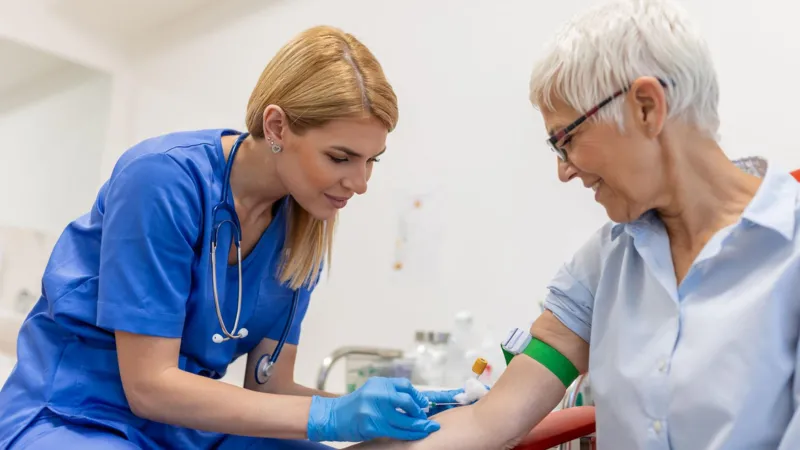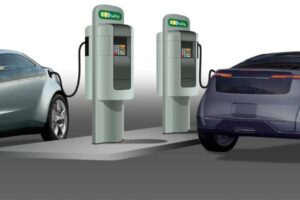
Dr Daniel Heller is a biomedical build at Dedication Sloan Kettering Cancer Center in Unused York.AI is prepared to spot caution signs in blood test.
His group have been created a testing innovation which employments nanotubes – little tubes of carbon which are around 50,000 times littler than the breadth of a human hair.AI is prepared to spot caution signs in blood test
About 20 a long time back, researchers started finding nanotubes that can transmit fluorescent light.
In the past decade, analysts learned how to alter these nanotubes’ properties so they react to nearly anything in the blood.
Now it is conceivable to put millions of nanotubes into a blood test and have them transmit distinctive wavelengths of light based on what sticks to them.
But that still cleared out the address of deciphering the flag, which Dr Heller compares to finding a coordinate for a fingerprint.
In this case the unique finger impression is a design of particles official to sensors, with distinctive sensitivities and authoritative strengths.
But the designs are as well unpretentious for a human to choose out.
“We can see at the information and we will not make sense of it at all,” he says. “We can as it were see the designs that are distinctive with AI.”
Decoding the nanotube information implied stacking the information into a machine-learning calculation, and telling the calculation which tests came from patients with ovarian cancer, and which from individuals without it.
These included blood from individuals with other shapes of cancer, or other gynecological malady that might be confounded with ovarian cancer.
Dr Heller portrays preparing the calculation on accessible information from fair a few 100 patients as a “Accost Mary pass”.
But he says the AI was able to get way better exactness than the best cancer biomarkers that are accessible nowadays – and that was fair the to begin with try.
The framework is experiencing encourage ponders to see if it can be made strides utilizing bigger sets of sensors, and tests from numerous more patients. More information can make strides the calculation, fair as calculations for self-driving cars can move forward with more testing on the street.
Dr Heller has tall trusts for the tech.
“What we’d like to do is triage all gynecological malady – so when somebody comes in with a complaint, can we allow specialists a device that rapidly tells them it’s more likely to be a cancer or not, or this cancer than that.”
Dr Heller says this may be “three to five a long time” away.
It’s not fair early discovery that AI is possibly valuable for, it is moreover speeding up other blood tests.
For a cancer quiet, catching pneumonia can be dangerous and, as there are around 600 distinctive life forms that can cause pneumonia, specialists have to conduct numerous tests to recognize the infection.
But unused sorts of blood tests are streamlining and speeding up the process.
Karuis, based in California employments counterfeit insights (AI) to offer assistance recognize the exact pneumonia pathogen in 24 hours, and select the right anti-microbial for it.
“Before our test, a quiet with pneumonia would have 15 to 20 distinctive tests to distinguish their disease in fair in their to begin with week in clinic – that’s almost $20,000 in testing,” says Karius chief official Alec Ford.
Karius has a database of microbial DNA which has tens of billions of information focuses. Test tests from patients can be compared to that database to recognize the correct pathogen.
Mr Portage says that would have been outlandish without AI.
One challenge is that analysts don’t essentially as of now get it all the associations that an AI might make between the test biomarkers and the diseases.
Over the final two a long time Dr Slavé Petrovski has created an AI stage called Milton that, utilizing biomarkers in the UK biobank information to distinguish 120 maladies with a victory rate of over 90%.
Finding designs in such a mass of information is as it were something that AI can do.
“These are frequently complex designs, where there may not be one biomarker, but you have to take into thought the entire pattern,” says Dr Petrovski, whose is a analyst at pharmaceuticals monster AstraZeneca.
Dr Heller employments a comparable design coordinating method in his work on ovarian cancer.
“We know that the sensor ties and reacts to proteins and little particles in the blood, but we do not know which of the proteins or atoms are particular to cancer,” he says.
More broadly information, or the need of it, is still a drawback.
“People aren’t sharing their information, or there’s not a component to do it,” says Ms Moran.
Ocra is financing a large-scale persistent registry, with electronic therapeutic records of patients who’ve permitted analysts to prepare calculations on their data.
“It’s early days – we’re still in the wild west of AI presently.
Related,
Malawi looks for billions of dollars from US firm over ruby sales








